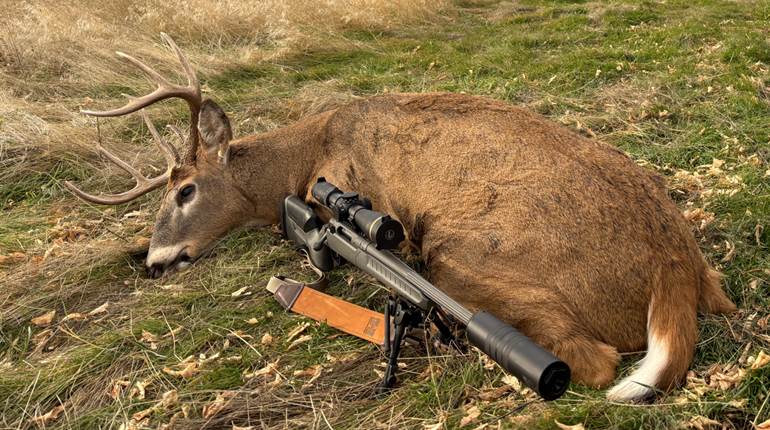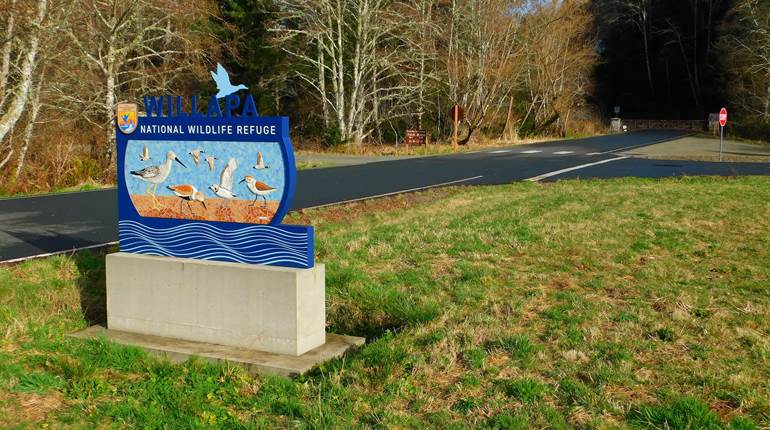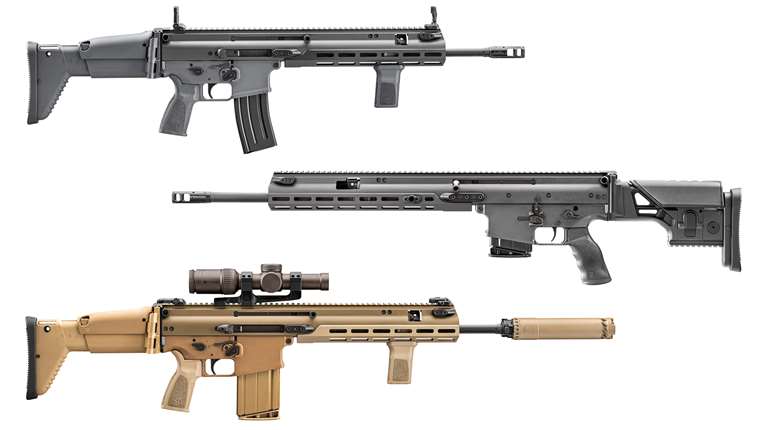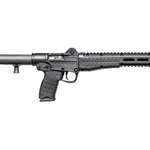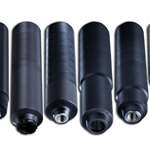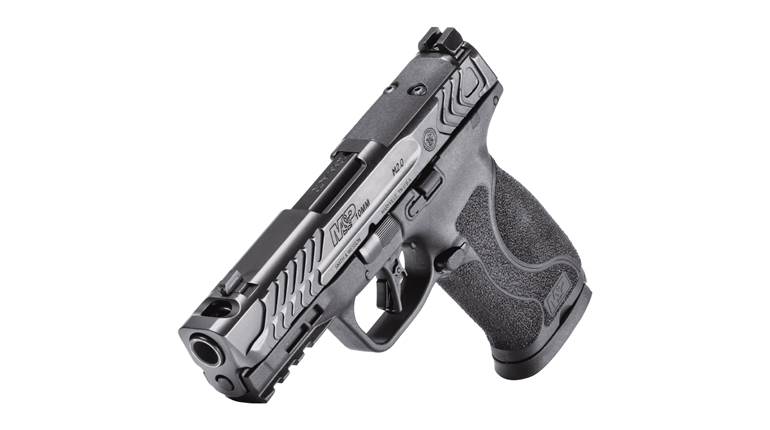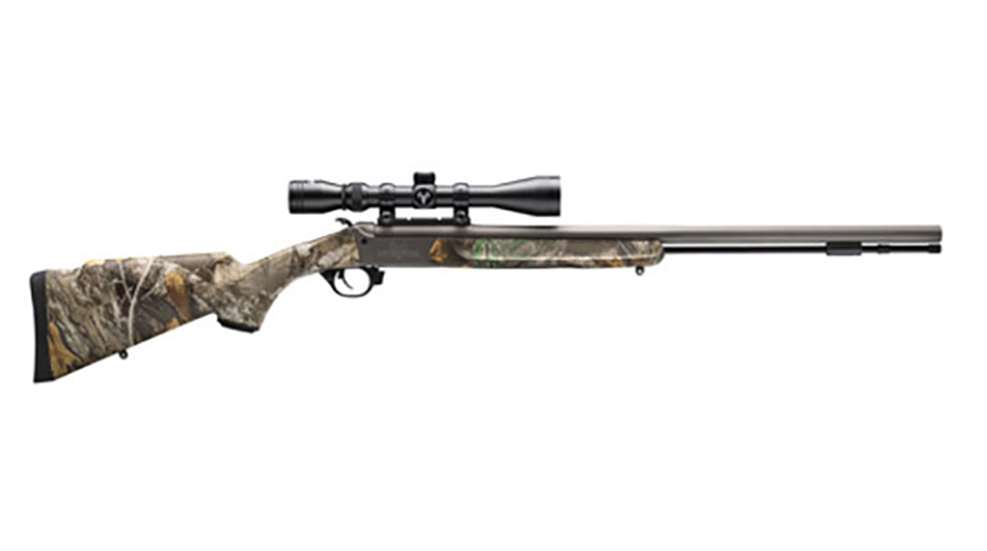
My earliest memory of seeing a muzzleloading rifle in action was as a boy during a family reunion up at my grandparent’s cabin. A cousin who participated in mountain man reenactments had brought his lovingly polished, homemade .50-cal. Kentucky rifle along for us to try. Dressed in his buckskins and toting a historically accurate possibles bag, he explained the history of the rifle and how it worked. It was sleek, elegant and heavier than I expected it to be when I got my turn to hold it. He then proceeded to load it several times so that interested family members could fire it.
That Kentucky rifle produced a thunderous report with surprisingly big clouds of white smoke that drifted away lazily on the gentle summer breeze of that memorable afternoon. And I can distinctly remember thinking to myself as I watched all of the steps needed to fire this classic rifle, "Man, is this slow! It takes forever to reload that thing! How did those mountain men not starve to death between shots? My pump-up Daisy BB gun is faster than this."
Years later, I would spend some time with my brother at the shooting range with one of the early screw-in breech plug .45-cal. inline muzzleloaders while he was sighting in for a hunt. The technological advances of his gun were clearly evident when compared to its muzzle-fed ancestors. It was stainless steel with a magnified optic and light weight polymer stocks.
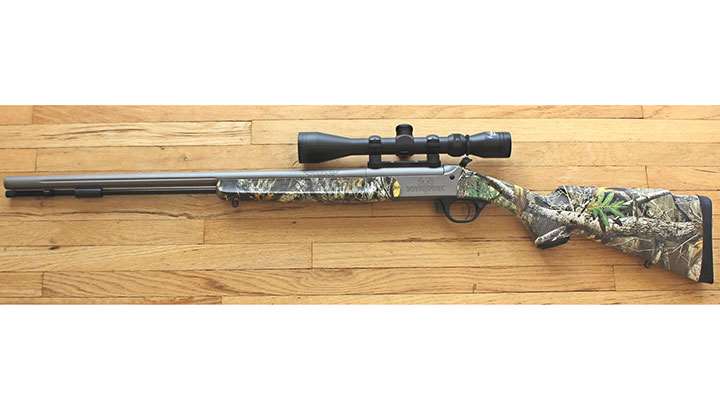
The traditional cap, black powder and lead ball were replaced with a modern 209 shotgun primer, a smokeless Hodgdon black powder substitute and polymer tipped expanding bullets wrapped in polymer sabots. It was definitely an improvement but not all that much easier to work with or to clean.
I ran into a fresh take on the muzzleloading platform at the 2020 SHOT Show. Traditions Firearms has teamed up with Federal Premium Ammunition and Hodgdon to launch an innovative series of modern hunting muzzleloaders. Dubbed the NitroFire series, these optics-ready rifles are easier to manage in the field and simpler to clean once the hunt is over thanks to a new powder management approach.
In the 35 years since Tony Knight introduced the MK-85, the first mass-produced in-line muzzleloader, the sophistication of the platform and the enthusiasm for the sport have continued to increase. The manufacturing processes and materials have kept pace with cartridge guns.
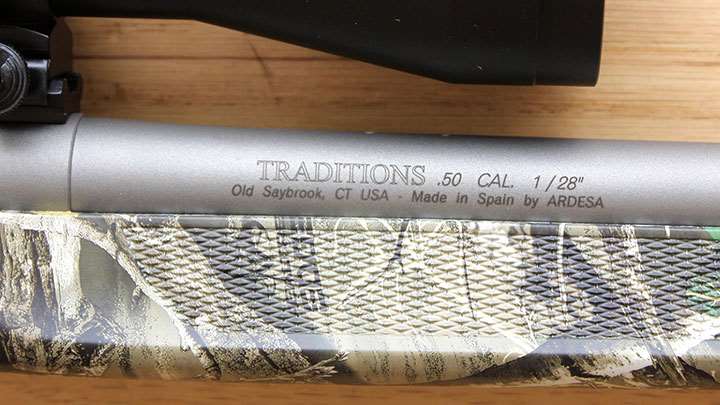
The No. 11 percussion cap has been replaced with hotter and more reliable 209 shotgun shell primers. Much more effective and accurate expanding polymer-tipped bullets wrapped in polymer sabots have taken the place of the old lead ball and patch. And more stable and reliable black powder substitutes are available. The effective range for in-line muzzleloaders these days is up to 200 yards with performance levels suitable for harvesting medium and large game.
But despite all of these upgrades, the handling of the powder charge has remained a challenge. Loose powder has to be measured out and carefully poured into the bore, which is no mean feat in harsh weather. Propellant pellets are pre-measured but just as susceptible to moisture and contamination as loose powder.
Federal Premium's solution to these powder related problems is the FireStick, which is an encapsulated powder charge. The 2.85" long, all-polymer, rimmed hulls are similar in size to a .410-Bore shotgun shell. They are filled with either 100 or 120 grains of Hodgdon's Triple Eight powder.
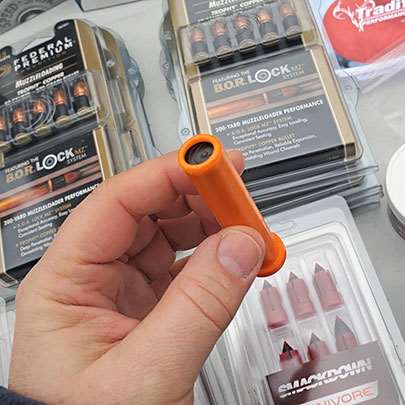
The business end is roll-crimped over a black polymer wad to form a water-resistant seal. The primer pockets also have a protective barrier to make each charge impervious to wet conditions. The FireSticks can be submerged in water, dried off and still fire properly.
The FireStick's .75" diameter rim and 209 primer pocket take the place of the breech plug. Just press the polymer hull into the chamber, and the powder charge is set. If the muzzle loader doesn't need to be fired, it can be just as easily removed from the chamber without the need to discharge the gun. Federal applies the same production tolerances and quality controls to making the FireSticks as they do when manufacturing centerfire cartridges. This ensures the same level of safe operation and consistent performance.
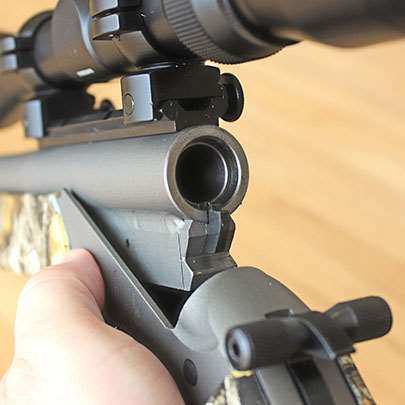
Manufactured in Spain by ARDESA, the NitroFire muzzleloader takes its design cues from the exposed hammer break-action Buck Stalker series of optics-ready hunting guns. The carbon-steel barrel and receiver are treated with a weather-resistant matte gun metal gray Cerakote finish. The bore of the 26" long fluted round-profile barrel has a rifling twist rate of 1:28". A blued steel thimble supports a two-piece aluminum ramrod that ships with a polymer Quick-T handle and brass adapter.
This particular rifle includes a Traditions in-house scope package. It arrived with a 4.25" aluminum scope rail, aluminum rings and an entry level 3-9x40 mm Traditions-branded scope installed at the factory. The top of the muzzle is drilled-and-tapped for a front sight, should customers choose to install iron sights.
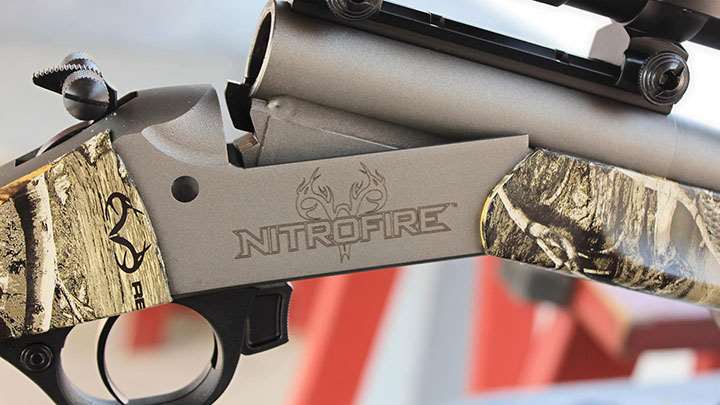
The exposed rebounding hammer has a set of knurled ambidextrous extensions for easy cocking when an optic is installed. The rounded black polymer trigger guard features a crossbolt safety button at the back with a barrel release lever located at the front. The NitroFire features the new Elite XT trigger system that allows the action to be opened with the crossbolt safety button engaged.
The two-stage trigger exhibited a light take-up before breaking cleanly with 2-lbs. 15-oz. of trigger pull. The lightweight checkered polymer stocks are available in a variety of camouflage finish options, including the Realtree Edge pattern shown here. The stocks are outfitted with a set of sling-swivel studs and a textured soft rubber recoil pad.
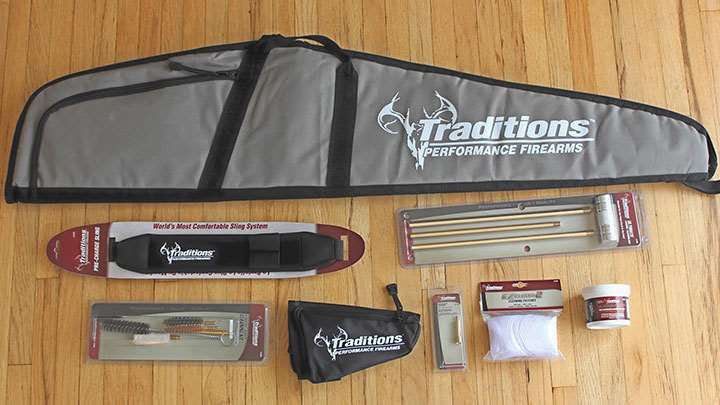
The loading process for the NitroFire begins with engaging the crossbolt safety and verifying that the rebounding hammer is in the forward position. With the rifle pointed in a safe direction, press the release lever located in front of the trigger guard to open the action and expose the breech. Look through the breech to verify that the chamber and bore are completely empty and then close the action.
Next, set and press the bullet down the barrel using the provided ramrod. There's a raised ridge between the bore and the chamber to prevent the bullet from being seated too deeply. The manual recommends notching the ramrod when the bullet is fully inserted so as to avoid double-loading the rifle. Some of the bullets would feel seated but still needed a bit more pressure to travel the last quarter inch to the ridge.
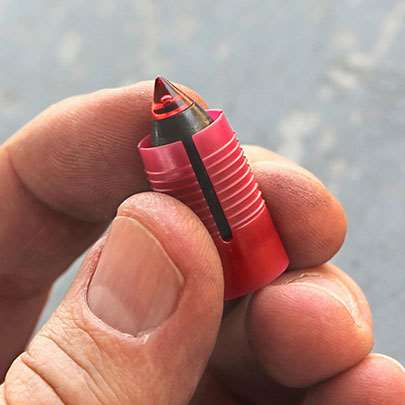
With the bullet in place, break the action open and insert the FireStick powder charge. Once the charge is in place, insert a 209 primer into the powder charge's primer pocket. Close the action. Take aim, cock the hammer, and then disengage the crossbolt safety to fire. Open the action, remove the spent powder charge and look through the breech to verify the bore is clear. The powder charge and its plastic wad produced a noticeable amount of fouling with each shot fired. I used the ramrod to run both sides of a Traditions Blackout 209 Pre-Saturated Cleaning Patch through the bore in between shots to prevent fouling from building up.
I considered speeding up the loading process a bit more by pressing the primers into the powder charges ahead of time so that the two components could be inserted in one motion as a single unit. It worked out nicely at the shooting range. However, while the FireStick primer pockets have been designed to accept all brands of 209 primers including Federal, Winchester and Remington options, there tends to be minute differences in primer specifications.
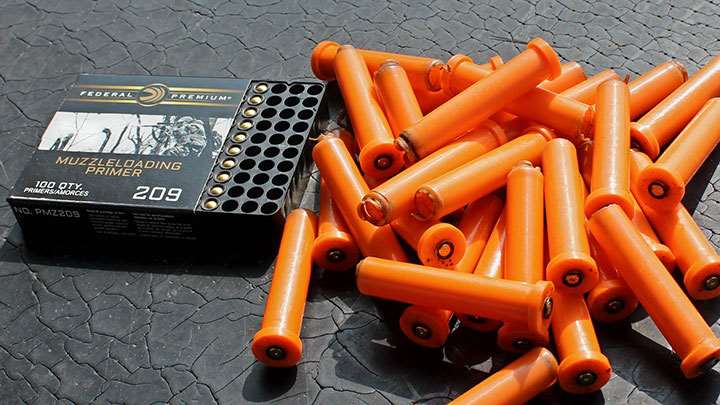
This means that some primers may not fit into the pocket as tightly as others and could fall out while the FireSticks are bouncing around in a pocket or pouch. Also, 209 primers are not waterproof. A damp or dropped primer is going to lead to a click instead of a bang at a critical moment, so it's better to keep the FireSticks and primers separated until loaded.
The NitroFire operated flawlessly without any mechanical or ammunition related issues throughout the testing process. The action, hammer and trigger were all smooth and clean in their operations. The spent FireStick hulls lifted out of the chamber easily and the scope maintained its zero once it was set. The soft rubber recoil pad helped to keep felt recoil to a moderate level that was comfortable to work with.
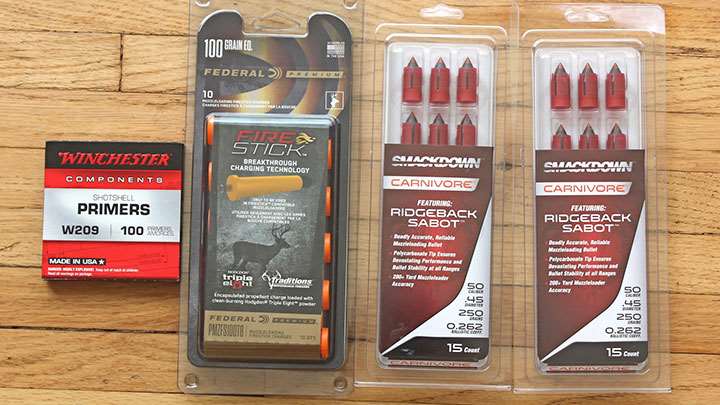
The bullets used for sighting in the rifle, and for formal bench rested accuracy testing at 100 yards, were Tradition's .50-cal., 250-gr. Smackdown Carnivore polymer tips couched in Razorback sabots. They were launched using 100-gr. FireStick powder charges ignited by Federal Premium's Muzzle Loader 209 primers.
Muzzle velocity was measured using a MagnetoSpeed V.3 chronograph, which employs a barrel-mounted bayonet-like sensor. I was curious to see if the NitroFire's bore would need a bit of breaking in, so the first five sighting-in shots were chronographed and showed an average velocity of 1950 fps. for 2,111 ft.-lbs. of energy at the muzzle. Bullet speeds picked up after that. The next consecutive 10-shots fired averaged 2,025 fps., a gain of 75 fps., for a muzzle energy of 2277 ft.-lbs.
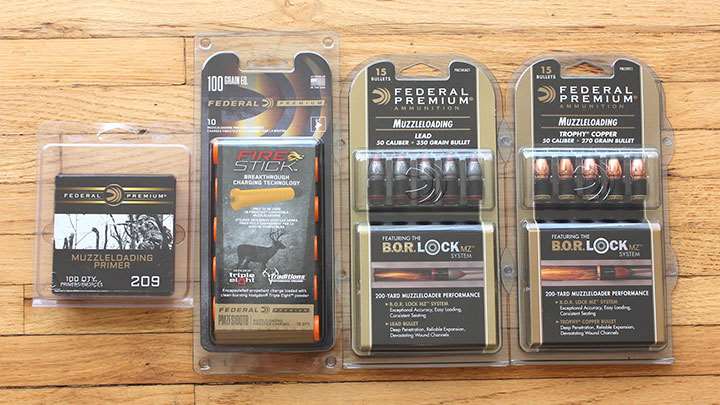
As for accuracy, the Tradition team told me that it's reasonable to expect this rifle to produce group size averages between 1.5" to 2" at 100 yards. It's not uncommon to use three 3-shot groups to set accuracy level expectations. But I followed the American Rifleman protocol of firing five 5-shot groups. The tightest single group was 2.09" with a five group average of 2.20". As is often the case with emerging technologies, the NitroFire rifle and FireStick powder charge do not quite fit into some states’ hunting regulations.
Generally speaking, rifles, shotguns or pistols that require the projectile(s) and powder charge to be loaded through the muzzle, to use black powder or black powder substitutes and cannot be loaded with 'fixed ammunition' (a rimfire or centerfire cartridge) are considered to be antique firearms. Per Section 921(3) of the “Gun Control Act of 1968,” antique firearms, in this case muzzleloaders, are excluded from the same regulations as cartridge firing guns. This means that they can be purchased without a background check, FFL or the related paper work.
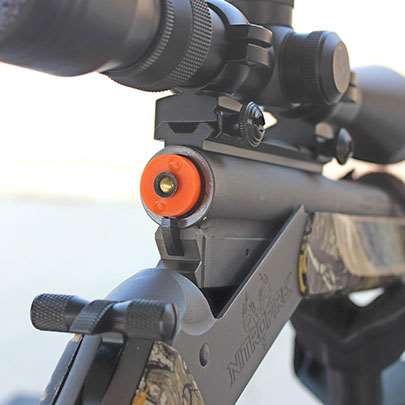
However, the NitroFire system operates differently. The bullet is still loaded from the muzzle with a black powder substitute used to launch it. But the powder is loaded through the breech, instead of the muzzle, using a polymer hull that can look an awful lot like a shotgun shell if you squint a little. As a result, the BATF has opted to err on the side of caution in classifying this rifle. Yes, the NitroFire is a muzzleloader, but the receivers must be stamped with a serial number, tracked and transferred via an FFL licensed dealer, just like a centerfire hunting rifle.
State hunting regulations are still playing catch-up as well. A number of states have given the NitroFire the green light for primitive hunts. More states are reviewing hunting regulations to create clarification regarding the use of FireSticks while the rest are a coin toss. In short, it's up to the hunter to contact the appropriate state agencies to get verification that the NitroFire is a legal option for harvesting game in a given jurisdiction.
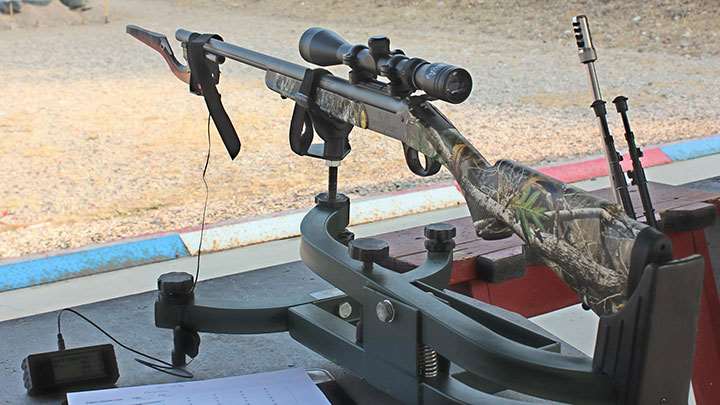
The Traditions Firearms NitroFire series of rifles offers faster loading and more convenient way to take advantage of muzzleloader hunting seasons. Federal's FireStick encapsulated powder charges take the guess work out of properly loading the gun while keeping your powder dry in the harshest conditions. The series is launching with no less than 10 different configurations, with and without scope packages, at suggested retail prices ranging from $549 to $699.
Those who are already dyed-in-the-wool fans of muzzleloaders will certainly appreciate the advantages and reduced cleaning time the NitroFire offers. But the folks that will probably appreciate this new system the most are those who've been on the fence about muzzleloaders or intimidated by the complexities of their operation. If I was going to dive into the sport, this would be the rifle and initiation system I'd prefer to use in the field. To learn more, visit traditionsfirearms.com
Specifications:
Manufacturer: Traditions Performance Firearms
Model: NitroFire with Optics Package (CR5-8411421)
Action: Break-Action Single Shot Muzzle Loader
Caliber: .50-Caliber
Powder Charge: Federal Premium FireStick
Primer: 209
Receiver: Steel with Cerakote Finish
Barrel: 26" Ultralight Chromoly Steel, Tapered and Fluted with Cerakote Finish
Ramrod: Solid Aluminum with Quick-T Handle
Stocks: Checkered Polymer with Realtree Edge Camouflage Finish
Recoil Pad: Textured Black Rubber
Trigger: 2-Stage Elite XT System
Trigger Pull: 2-lbs. 15-oz. (As Tested)
Hammer: Ambidextrous Extended
Overall Length: 41.5"
Weight: 7-lbs. 10-oz. with Optic and Ramrod
Capacity: 1 Round
Twist: 1:28 RH
Rifle Grooves: 8
Accessories: Deluxe Soft Carry Case, Ramrod Assembly, Owner's Manual
Suggested Retail: $699
* Requires an FFL transfer












